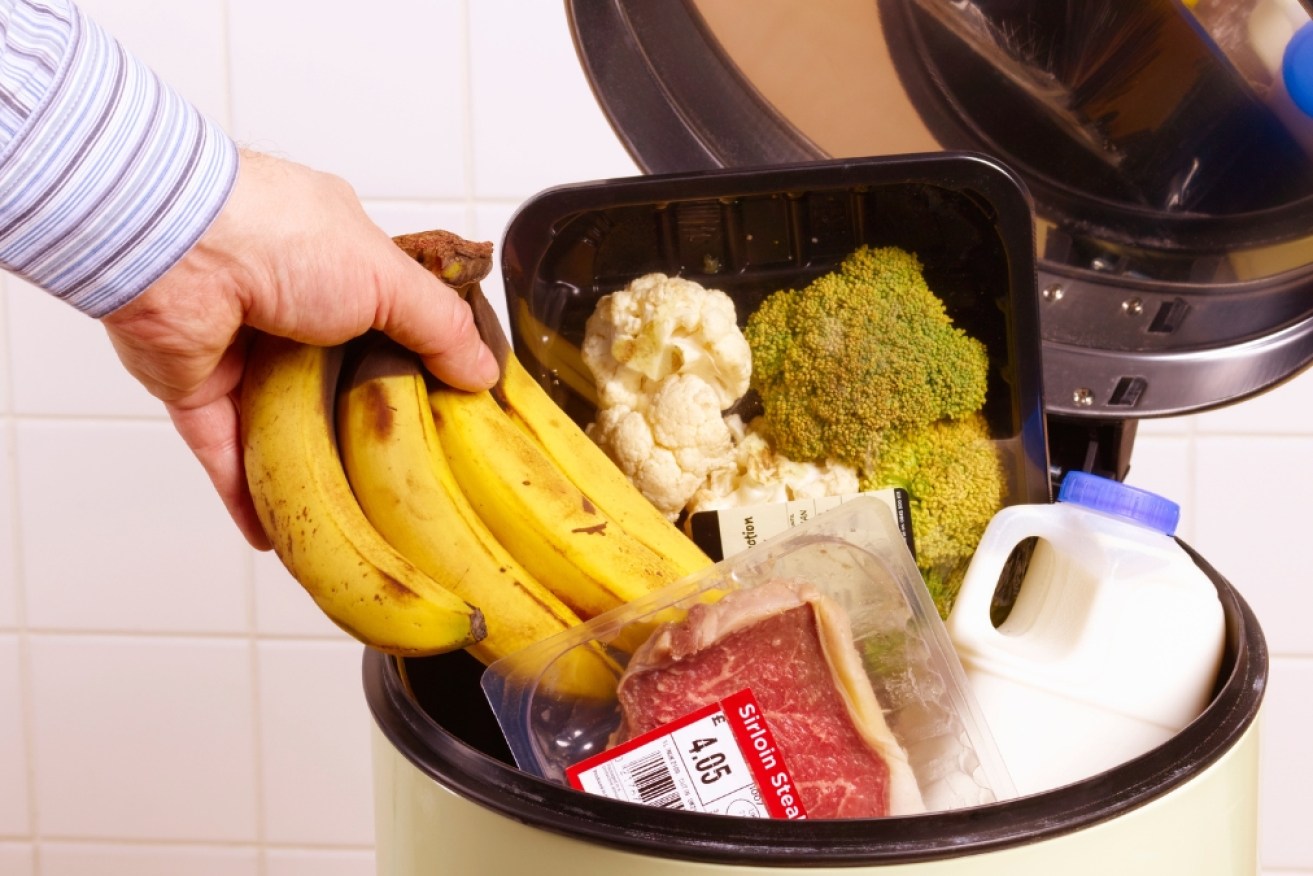Use-by dates contribute to ‘huge’ food waste: Here’s how to work around them


Australians are throwing away thousands in uneaten food a year. Photo: Getty
A use-by date for a carton of milk is quickly becoming a thing of the past overseas, and there are some calls for Australia to follow suit to help cut back on food waste.
Last week, Marks & Spencer became the latest UK retailer to replace use-by dates on milk with best-before dates, following similar moves from retailers like Morrisons, Waitrose and Sainsbury’s.
Marks & Spencer is now urging customers to use their judgment instead of relying on labels.
Lukas Parker, RMIT University School of Media & Communications associate professor and project leader at the Fight Food Waste Co-operative Research Centre, said food waste is also a huge problem in Australia.
Every year, 7.6 million tonnes of food is wasted locally, which roughly works out to about 300 kilograms per Australian, he said.

Reducing food waste is one key way to get emissions down. Photo: ABC Radio Darwin
“That food waste has had a whole bunch of energy invested into it, which could include fossil fuels … water, fertiliser, electricity to refrigerate, and all of those things,” Dr Parker said.
“Around one-third of that waste comes from consumers at a household level.”
Use-by and best-before labelling plays a big part in this waste.
Many Australians are confused about the meanings of the dates on packaging, or use them as a hard limit when there might be some flexibility regarding whether a product is still healthy to consume.
Difference between use by and best before
A use-by date is an indicator of whether a product is still safe to consume without risk to your health.
A best-before date is an indicator of the quality of a product, which may deteriorate after a certain date, but still be safe to consume.
Unfortunately, some people view best-before dates as use-by dates, and throw out food that still would have been safe to eat.
For example, if a piece of meat set to expire in a week was left unrefrigerated for even a few hours, it would probably become unsafe to eat sooner than its packaging would suggest.
How to tell whether a product is safe
In the UK, where dairy products are receiving fewer and fewer use-by dates, Brits are being told to use their noses.
Matt Rose, OzHarvest advocacy & sustainability lead, said smell is often a good indicator of the safety of a fresh food or drink.
Milk that has gone bad can usually be weeded out with a sniff, or a check of consistency to make sure there’s no chunks.
Your sense of smell can also help when it comes to checking eggs past their use-by date, as eggs that have gone off will have a slightly sulphuric smell.
Mr Rose said fresh produce like fruit and vegetables are different to meat in that if there’s a part that looks like it has gone bad, you can just cut it out and the rest should still be safe to consume.
Source: Instagram/OzHarvest
If you want to extend the life of your food, often the best way to do is to freeze it.
“If you know you’re not going to eat food like dairy or meat in time, you can put it in the freezer and it can store for up to six months,” Mr Rose said.
“So even though maybe it will go off the next day or that day, if you put it in the freezer, you can take it out within the next few months, defrost it, eat within the day and it will be totally fine.”
Date marks still mandatory in Australia
In Australia, the Australia New Zealand Food Standards Code requires the display of date marks on food, including best-before and use-by dates.
The only exceptions are if the best-before date is set for two or more years after the date is being determined, if the food is ice cream or an ice confection, or if the food is in a small package.
Under this code, foods labelled with a use-by date can’t legally be sold, and aren’t recommended to be consumed, once the date passes due to possible health or safety risks.
Food suppliers are responsible for deciding if a use-by or best-before date is used on their product.
Mr Rose said it’s reasonable to give consumers an idea of how long their food will last, but a problem arises when the date on the package is viewed as a “red line”.
“We’ve been encouraging supermarkets and others here to take some of the things that are … use-by and change those dates into best-before, and use it as an opportunity to educate consumers about food, because we know that it will help reduce food waste,” he said.
“Australia has a target, as a country, to halve food waste by 2030.
“So consumers, retailers, [and] businesses all have a really important role to play in helping us reduce food waste.”

Paying attention to how long your food will last is a good idea, but use-by dates might not be the be-all and end-all. Photo: Getty
Food Standards Australia New Zealand told TND it is not currently reviewing date-marking requirements.
Any proposal to change the standard would need to be considered by the Food Ministers’ Meeting.
A Woolworths spokesperson said the supermarket chain provides use-by dates across its own-brand milk range to ensure food safety for customers.
“We will continue to consider opportunities such as this to reduce food waste together with our processing partners, with the needs of our customers in mind,” they said.
Coles did not respond to TND‘s request for comment in time for publishing.








